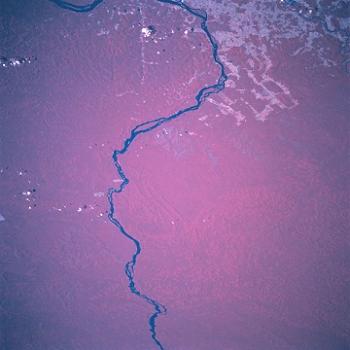The approval of the hydro-electric Belo Monte Dam from the Brazilian environmental agency, IBAMA, has raised condemnations from environmentalists and indigenous groups. The dam will divert the flow of the Xingu River, a tributary of the Amazon River, which runs through the Amazon in northeast Brazil. According to critics the dam will destroy vast areas of pristine rainforest, disrupt sensitive ecosystems, and relocate 12,000 people.
“The government is trying to steamroll this project, which would have unforeseen and irreversible consequences, despite the fact that the President promised us he would review the project and said he would ‘not shove it down anyone’s throat’. One-third of the city of Altamira would be underwater and nobody knows yet where those 20,000 people would go, in addition to the riverbank populations and those who would be impacted by the drying of the Xingu’s tributaries,” says Dom Erwin Kräutler, Catholic Bishop of the Xingu Prelacy.
The government, which has set an auction for the project for April, says that whatever company is awarded the dam will have to shell out 800 million dollars to secure environmental protection and have set 40 conditions that must be met. However, even with such protections, the dam is expected to flood 500 square kilometers (97 square miles) of forest and affect 40,000 people in the area.
 The Xingu River from space. Photo courtesy of NASA. |
Indigenous people have been fighting against the dam for decades. In the 1990s the project was abandoned due to protests, but the government now says it has dealt with many of the dam’s environmental issues, including cutting the area flooded by 90 percent.
“The environmental impact exists but it has been weighed up, calculated, and reduced,” Environment Minister Carlos Minc said according to Reuters, adding that “not on Indian on indigenous land will be displaced.”
However, many locals are not convinced by the government. “We want to make sure that Belo Monte does not destroy the ecosystems and the biodiversity that we have taken care of for millennia. We are opposed to dams on the Xingu, and will fight to protect our river,” says Megaron Tuxucumarrãe, a Kayapó chief.
The 11,000 megawatt dam is estimated to provide electricity to 23 million homes in Brazil. However, during three to four months of the year the dam will only run at less than 10 percent of capacity due to low waters—a fact which produces additional criticism of the proposal.
“Belo Monte is a project of doubtful engineering viability, an extremely complex project which would depend on the construction not only of one dam, but rather a series of large dams and dykes that would interrupt the flow of water courses over an enormous area, requiring excavation of earth and rocks on the scale of that carried out for digging the Panama Canal,” says Francisco Hernandez, an electrical engineer and co-coordinator of a group of 40 specialists who analyzed the project.
The Belo Monte dam is just one of nearly 100 dams planned for Brazil’s Amazon to deal with the nation’s soaring energy demands. Last year a power outage in Brazil affected a third of the population, and many wondererd whether it would push through dams, like the Belo Monte, that had long been on the backburner. Such considerations appear to have been correct: after the auction in two months, construction for Belo Monte is set to begin this year. Yet, far from being carbon-neutral, dams that flood forests release massive amounts of carbon and methane, a far more potent greenhouse gas than carbon.
“No one knows the true cost of Belo Monte,” said Aviva Imhof, International Rivers Campaigns Director, in a press release. “The project would displace tens of thousands of people, and destroy the livelihood of thousands more. Even as Brazil argues that the international community should support rainforest protection, its government insists on promoting mega-infrastructure projects in Amazonia that are socially and environmentally indefensible.”
Activists say they will continue the fight against the dam, however environmental approval by IBAMA makes the reality of the Belo Monte Dam much more likely. If built, the dam will be the world’s third largest.
Related articles
Blackout in Brazil: Hydropower and Our Climate Conundrum
(11/19/2009) It’s everyone’s worst nightmare: being caught in an underground subway in the midst of a power outage. Yet, that is exactly what happened recently when Brazilian commuters in the city of São Paulo were trapped inside trains and literally had to be pulled out of subway cars. In addition to sparking problems in public transport, the blackout or apagão led to hospital emergencies and the shutting down of several airports. In all the power outage darkened approximately half of the South American nation, affecting sixty million people.
Will Brazil’s blackout drive a new push for more rainforest dams?
(11/12/2009) The power outage that affected nearly a third of Brazil’s population Tuesday could be used by development interests to justify a renewed push for hydroelectric dams in the Amazon rainforest.
Brazil OKs $4 billion dam in the Amazon rainforest
(11/13/2008) Brazil has given final go-ahead on a controversial dam on the Madeira river in the Amazon rainforest provided environmental conditions are met, reports the Associated Press.